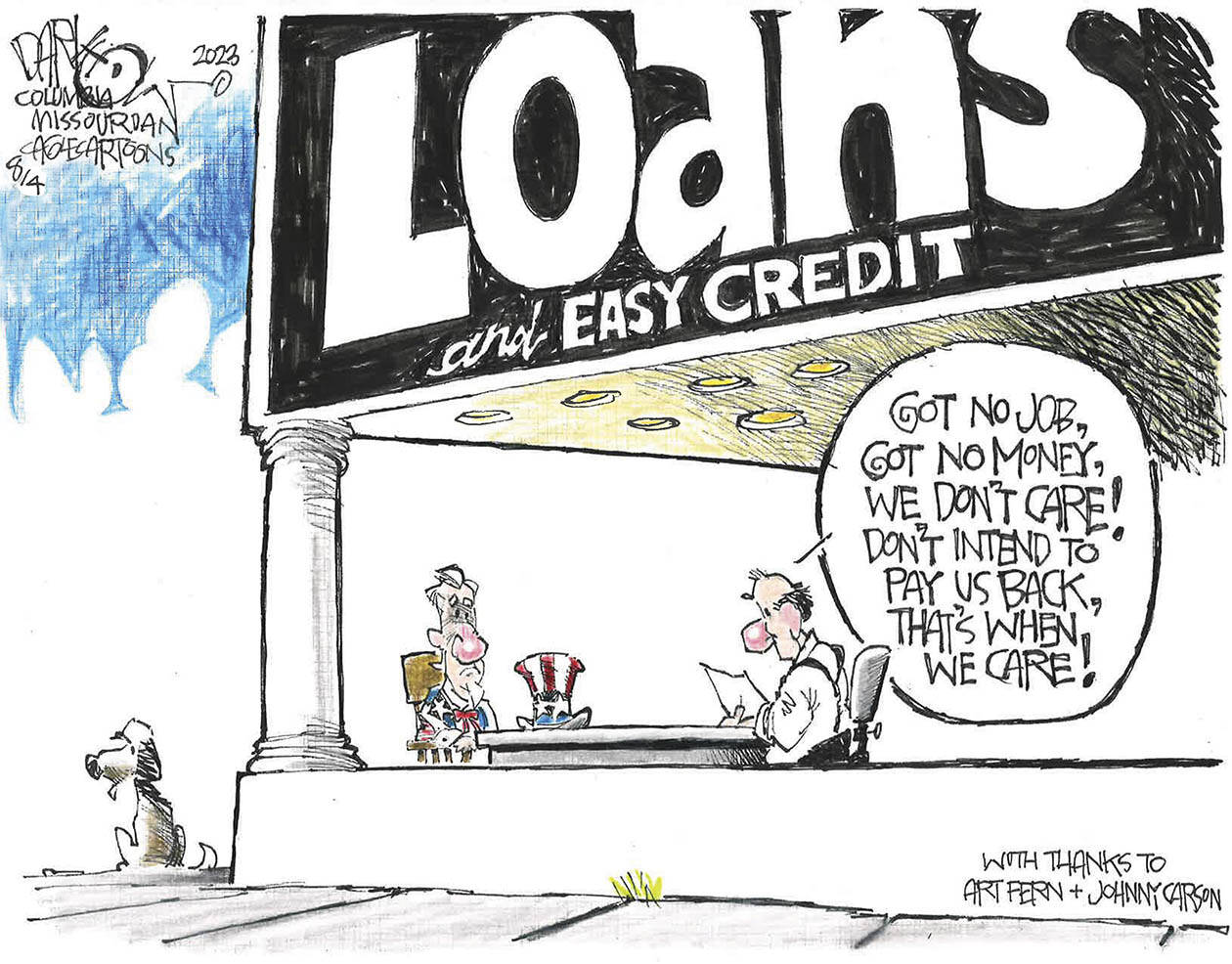On Aug. 1, the rating agency Fitch dropped the U.S. government’s long-term credit rating from AAA to AA+. Fitch said the downgrade “reflects the expected fiscal deterioration over the next two or three years, a high and growing general government debt burden, and the erosion of governance.”
The surprise is that, in light of Fitch’s concern about how the Biden administration manages the federal government, the rating agency didn’t downgrade further. Save for the detrimental effect a further downgrade would have on the markets, a bigger lowering is justified.
In a Fitch statement, the agency said: “There has been a steady deterioration in standards of governance over the last twenty years, including on fiscal and debt matters. The repeated debt limit political standoffs and last-minute resolutions have eroded confidence in fiscal management.”
U.S. debt has surpassed $31 trillion and is expected to reach $52 trillion in 2033. Rising interest rates, as the Fed attempts to cool inflation, have fueled Fitch’s concerns about the debt burden. The prediction of the Congressional Budget Office that the ratio of federal debt-to-GDP would nearly double from 98% in 2023 to 181% in 2053 is nightmarish.
In an alternative but more troubling scenario drafted by the Committee for a Responsible Federal Budget, the debt-to-GDP ratio could soar even higher, hitting 222% of GDP by 2053. In the past 17 months, the Federal Reserve has hiked its overnight bank lending rate 11 times. More increases are certain. Analysts predict the obvious – that the U.S. is on a course of “drowning in debt.”
When Fitch refers to “the erosion of governance” – meaning bad governance – surely those who pass judgment on the U.S. debt must have in their minds the wild, imprudent spending spree the Biden administration embarked on during the pandemic.
A sampling: the “American Rescue Plan,” a $1.9 trillion bill known as a COVID relief package; second, the “American Jobs Plan” at $2.3 trillion, advertised as legislation that would upgrade the nation’s infrastructure; and third, the “American Families Plan,” $1.8 trillion in spending that’s vaguely defined as a bill to expand access to education, reduce the cost of child care and support women in the workforce.
In total, the Biden administration has laid out $6 trillion that it doesn’t have for bills that will produce dubious results, if any.
Also raising eyebrows at Fitch must be the White House’s determination to support Ukraine in its endless war against Russia. Ukraine is now the top recipient of U.S. foreign aid, and the White House has poured more than $75 billion into a corrupt country’s coffers without any accountability for how the funds have been disbursed. The consensus opinion is that the war may drag into 2025, thereby sucking up more U.S. taxpayer money.
Fitch must also interpret the unprecedented Southwest border invasion as poor governance. The arriving migrants are mostly poor, undereducated and therefore likely to become government assistance-dependent.
Estimated at more than 5.5 million since Biden’s inauguration, the migrants’ presence has disrupted major cities, including New York and Chicago, as well as many Texas border communities. The invasion costs taxpayers billions of dollars, and the costs are mounting. Since no one truly knows the migrants’ backgrounds and intentions, or what their total number may eventually reach, Fitch analysts must view the open border with skepticism.
Finally, looking to 2024, Fitch must look askance at the prospect of either former President Trump, who will be 78 on Election Day, or Biden, who then will be 82, in the White House. Whoever wins, four more years of divided government is assured.
Looking at the whole disheartening picture, Fitch’s AA+ grade is generous. The piling of more debt onto the mountain of existing debt, the unnecessary and expensive entanglement in a foreign war that has no bearing on the U.S., an open border – an obvious national security threat – that’s given entry to terrorists and enabled drug and human trafficking, and a contentious federal government at least until 2028 are all huge waving red flags.
The agency’s declaration that the outlook for the U.S. is “stable” is highly doubtful.
Copyright 2023 Joe Guzzardi, distributed by Cagle Cartoons newspaper syndicate. Guzzardi has written about immigration for more than 30 years. Contact him at jguzzardi@pfirdc.org.



